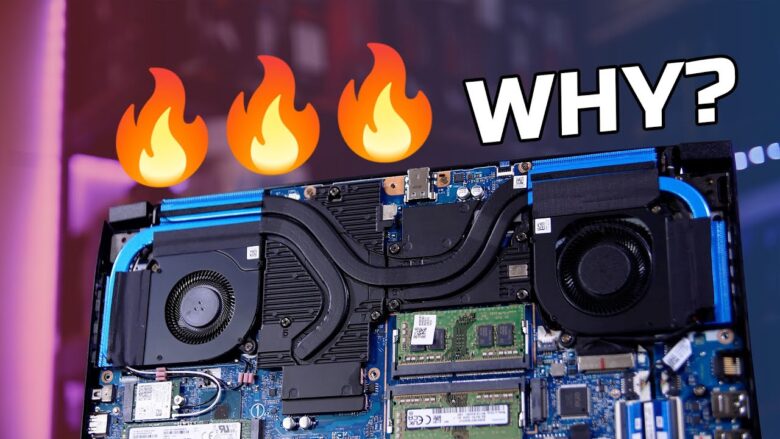Gaming laptops are powerful machines, yet they also generate considerable heat. Coupled with loud fan noises, this can be an uncomfortable experience for some users. Thankfully, there are ways you can work around this issue and help to mitigate it.
Starting off, try using a cooling pad and playing in an air-conditioned or ventilated room. Additionally, adjust your power settings and update drivers as part of a solution plan.
1. Optimize Your Power Settings
Gaming laptops pack an abundance of power into a compact form factor. Unfortunately, that much power can produce significant heat during gameplay and cause overheating issues that inhibit its smooth running.
Proper cooling is key to preventing overheating, given that both CPU and GPU work hard in such tight quarters. Cooling systems rely on fans to circulate air around internal components and cool them down; should any of them malfunction or become blocked with dust, it will be harder for laptops to maintain an ideal temperature setting.
There are various solutions to gaming laptop overheating, ranging from cleaning fans and vents, updating drivers and using tools that monitor temperature to adjusting in-game settings such as texture quality or shadows to reduce stress on hardware during gameplay and thereby decrease heat production – these simple fixes could make a big difference in keeping your gaming laptop cool for an enjoyable lag-free experience.
2. Utilize a Cooling Pad
Gaming laptops are built to pack high-performance components into a portable chassis, which creates heat due to compression of hardware components into tight spaces. If not properly ventilated, this heat can build up and lead to overheating which in turn affects performance by leading to stutters or lags during gameplay.
To prevent overheating, consider investing in a cooling pad to increase airflow and dissipate heat. Gaming pads typically feature multiple fans that direct airflow onto the bottom of your device while elevating it above any surface or providing built-in ports for connecting peripherals.
Cooling pads may only work effectively if your laptop is overheating due to resource-intensive processes or applications. While cooling pads might make your laptop “feel cooler”, they won’t address core or GPU temperatures directly. In order to address these issues, install a temperature monitoring application and shut down resource-intensive programs to avoid overheating – saving power while prolonging its lifespan!
3. Apply Thermal Paste
Gaming laptops often tend to run hot. High temperatures can damage internal components and even lead to complete hardware failure, but there are a few simple measures you can take to keep your machine cool and operating at its peak performance.
One of the simplest ways to increase cooling is through applying thermal paste. Applying thermal paste fills any microscopic gaps between CPU and heat sink, helping disperse heat more evenly across both components and lower temperature by filling any microscopic spaces that remain between them, helping dissipate it more efficiently and reduce temperature.
Many builders on YouTube and PC forums recommend manually spreading paste with a credit card or similar flat tool, creating air bubbles which prevent an efficient heatsink from conducting efficiently. While this method may produce results, this approach also creates small air pockets which prevent its effective performance.
Before beginning, read any instructions included with your thermal paste and CPU cooler. Every brand of thermal paste varies slightly; familiarizing yourself with its specifics will make the process go more efficiently. After applying your new thermal paste to the CPU, double check that it has spread evenly and remains attached securely.
4. Update Your Drivers
Gaming laptops can generate considerable heat during gameplay. If this heat isn’t properly channelled away from the device, overheating may occur and lead to stuttering and lag; over time this extreme temperature could even compromise processor and GPU performance.
Laptop fans are the primary line of defense against overheating. If these become dysfunctional or blocked by dust, they cannot circulate air effectively and cool components effectively. To keep the fans functioning effectively, clean them regularly using compressed air or an appropriate cleaner; you could also open your laptop up and apply fresh thermal paste; however this process is considered more advanced maintenance which may void warranties.
To update your drivers, navigate to your hardware manufacturer’s website and download the appropriate versions for your hardware model number. Or you could try automatic driver update tools which scan your system and provide one-click solutions to download and install updates for all components on it; these often provide backup copies should something go wrong and can even allow you to roll back any unwanted changes if something does.
5. Underclock Your GPU
Gaming laptops contain many high-performance components in an easily portable chassis, placing immense strain on both their CPU and GPU to keep pace. If too much heat builds up inside, performance could suffer or it could even cause lasting damage to internal components over time.
As it turns out, there are a few measures you can take to prevent your gaming laptop from overheating while playing games. First off, be sure to place it on a flat surface so air can circulate properly; use compressed air to clear away any dust blocking the vents; and more!
Underclocking your GPU can help it run cooler and reduce power consumption, but beware as changing voltage settings could have detrimental effects on system stability. To avoid potentially damaging your GPU, make incremental adjustments and test for stability after every change; this way you will discover an ideal setting that balances performance, power efficiency, and temperature management.




